Ginger, known for its spicy, fragrant root, is a delightful addition to any home garden. As a gardening enthusiast, I’ve found immense joy and numerous benefits in growing ginger.
It’s not just about having fresh ginger on hand for culinary uses; the journey from planting to harvesting is filled with learning and satisfaction.
In this article, I’ll guide you through the process of growing and caring for ginger, sharing insights from my own experiences to help you in your gardening adventure.
Benefits of Growing Ginger
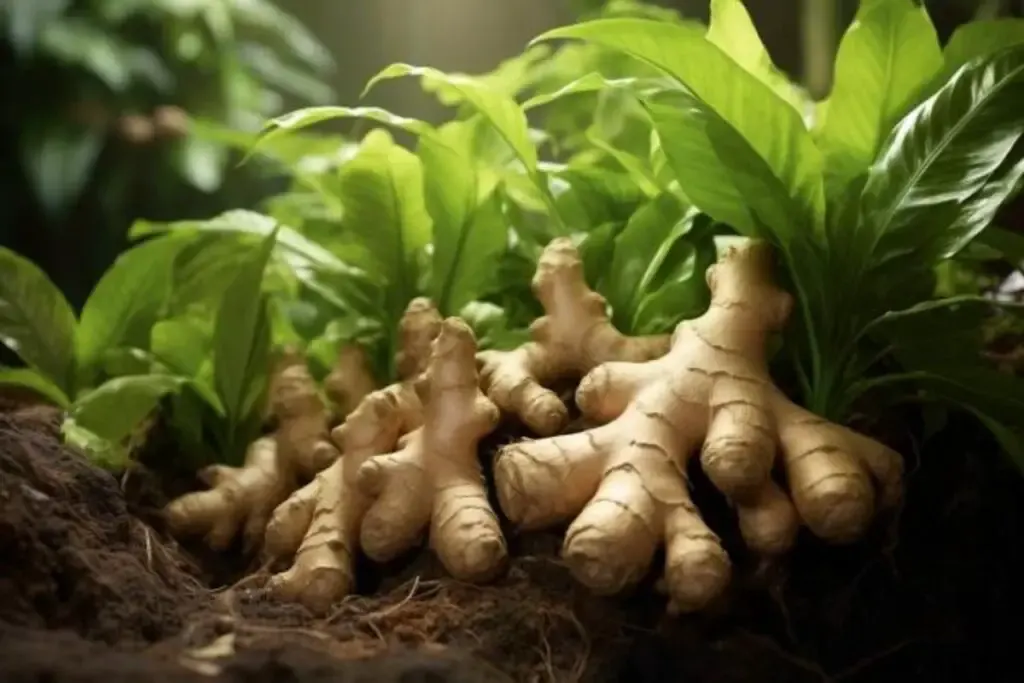
1. Freshness and Flavor
There’s nothing quite like the taste of freshly harvested ginger. It’s more aromatic and flavorful compared to store-bought ones.
Growing your own ensures you have the freshest ginger right at your fingertips, ready to add a zing to your dishes.
2. Health Benefits
Ginger is renowned for its health benefits. It’s a natural anti-inflammatory and antioxidant and has been used for centuries in herbal medicine.
Growing it yourself means you have easy access to this powerful root for teas, cooking, or natural remedies.
3. Easy and Rewarding
One of the best parts about growing ginger is that it’s relatively low-maintenance. It can thrive in a pot or in the garden, making it suitable for various spaces and gardening styles.
Watching the plants grow and eventually harvesting your own ginger is incredibly rewarding.
My Favorite Ginger Varieties
1. Common Ginger
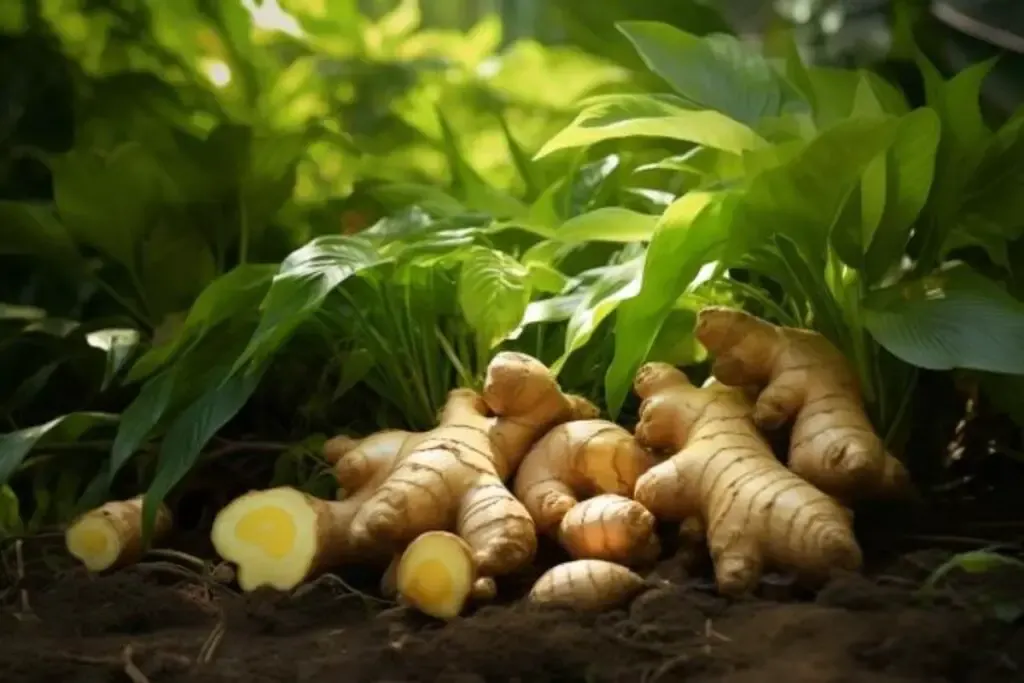
This is the classic ginger variety that you’ll find in most grocery stores. It’s versatile in the kitchen and relatively easy to grow, making it a top choice for home gardeners.
2. Blue Hawaiian Ginger
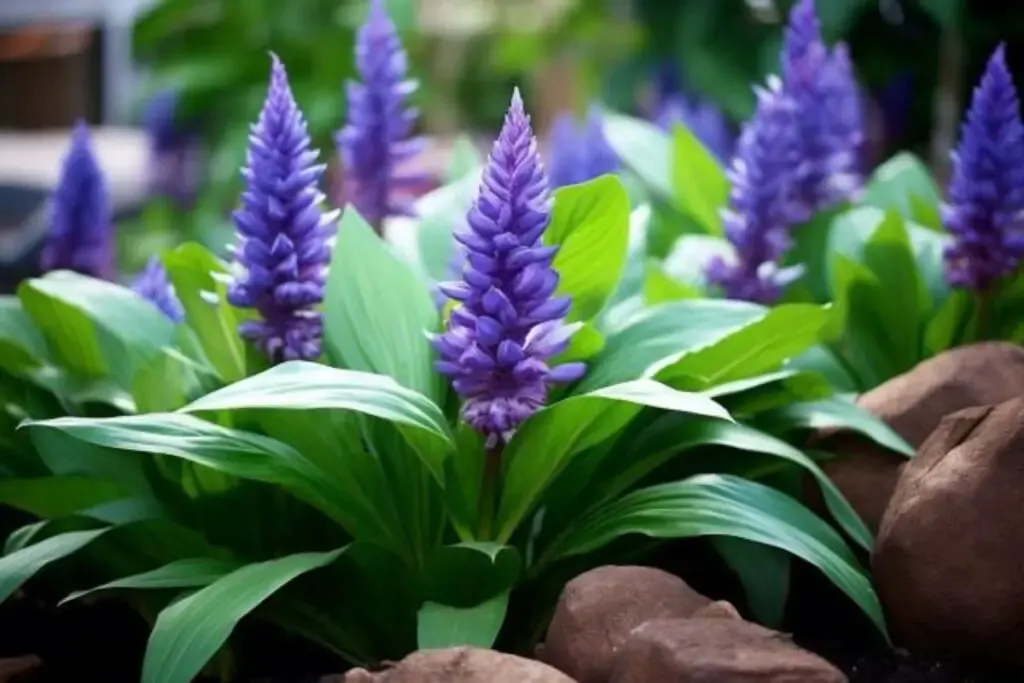
Known for its unique blue-tinged roots, this variety is not only beautiful but also has a slightly milder flavor. It’s a wonderful ornamental plant as well as a culinary delight.
3. Thai Ginger (Galangal)
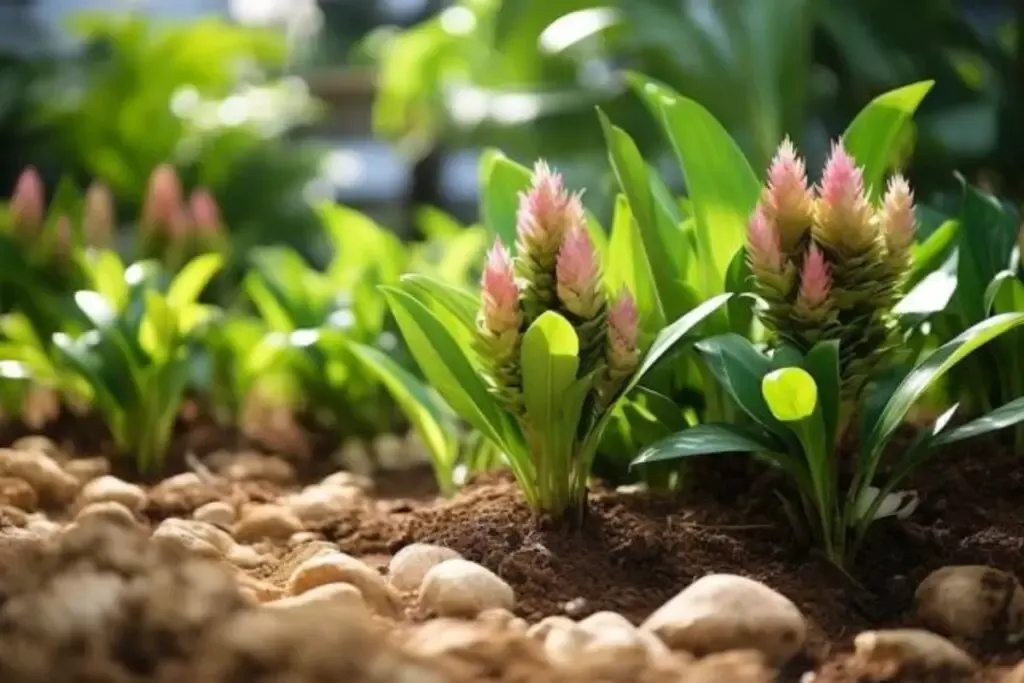
While technically a different species, Thai ginger or galangal is closely related and used similarly in cooking. It has a sharper, more citrusy flavor and is a staple in many Asian dishes.
Ginger Care
Ginger is a robust and rewarding plant to grow, but it does have specific needs to thrive. Understanding and meeting these requirements will ensure a healthy plant and an abundant harvest.
Let’s dive into the key aspects of ginger care.
Planting
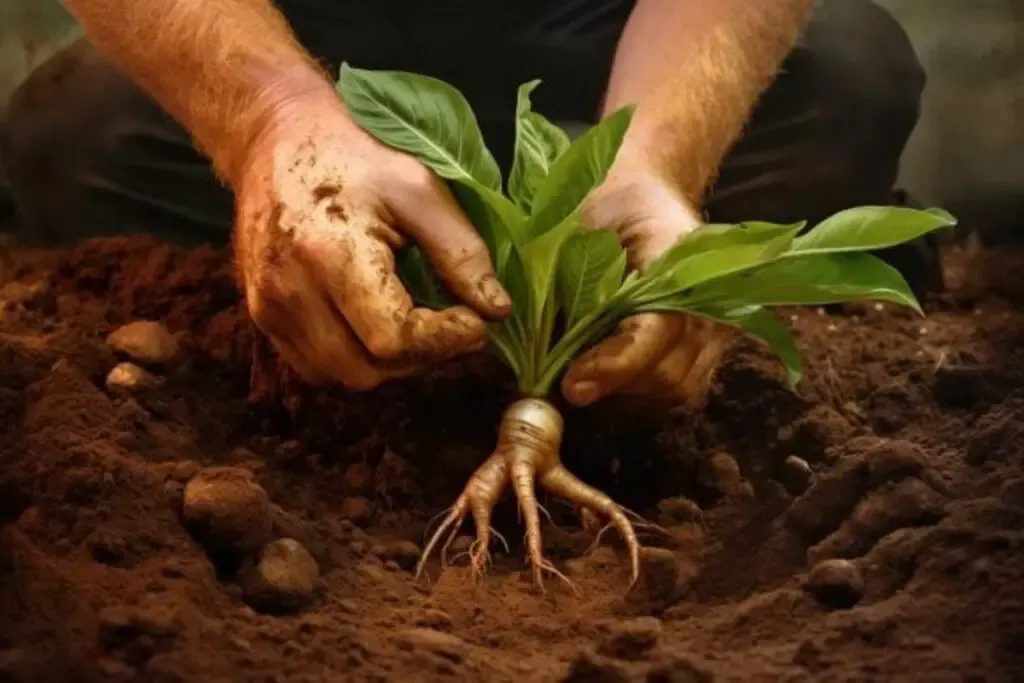
Planting ginger starts with choosing the right rhizome. Look for a fresh ginger root with well-developed growth buds or ‘eyes.’ You can start with a piece from the grocery store or get one from a nursery.
Plant ginger in the early spring. Cut the rhizomes into pieces, each with at least one eye. Plant them about 2-4 inches deep in soil, with the eye pointing upwards.
Light
Ginger prefers partial shade or filtered sunlight, making it ideal for areas that don’t receive harsh, direct sunlight all day. If you’re in a particularly hot climate, ensure your ginger plants are protected from the strong afternoon sun.
Soil
Ginger thrives in rich, loamy, well-draining soil. Good drainage is crucial to prevent the roots from rotting. If you’re planting in containers, a good-quality potting mix will work.
For garden beds, amend the soil with plenty of compost to improve its structure and nutrient content.
Water
Ginger needs consistent moisture, especially during the growing season. Water regularly to keep the soil evenly moist but not waterlogged.
The goal is to maintain a balance – the soil should never dry out completely, nor should it be soggy.
Temperature and Humidity
Ginger loves warm, humid conditions. The ideal temperature range for growing ginger is between 75°F and 85°F (24°C to 29°C).
If you live in a cooler climate, you can still grow ginger indoors or in a greenhouse.
Fertilizer
Feed your ginger plants with a balanced, slow-release fertilizer at the beginning of the growing season.
You can also use organic options like compost or well-rotted manure. Ginger is not a heavy feeder, so be careful not to over-fertilize.
Harvesting Ginger
The anticipation of harvesting ginger adds an exciting element to gardening. Ginger is typically ready for harvest about 8-10 months after planting.
You’ll know it’s time when the leaves turn yellow and start to die back. To harvest, gently dig around the plant and pull up the entire plant. You can then cut off pieces of the rhizome and replant the rest to continue growing.
For a continuous supply, you can also carefully unearth a portion of the root, cut off what you need, and replant the rest. This way, you can enjoy fresh ginger without having to harvest the entire plant at once.
Pruning
Pruning is not commonly required for ginger plants. However, you may occasionally need to trim away any dead or dying leaves to keep the plant healthy and encourage growth.
This helps to prevent any potential fungal or pest issues, especially in humid climates.
Propagating
Ginger is propagated through rhizome division. This is a simple and effective way to create new plants. Select a healthy piece of ginger root that has several eyes (growth buds).
Plant it just as you would when initially planting ginger. This method ensures genetic consistency and is the most common way of propagating ginger.
How to Grow Ginger From Seed
Ginger is not typically grown from seeds by home gardeners, as it’s most commonly propagated through rhizome division.
Ginger seeds are rarely used and can be difficult to find. If you do come across ginger seeds, follow the specific planting instructions provided with them.
However, for most gardeners, starting with a fresh ginger root is the easiest and most reliable method.
Growing in Pots
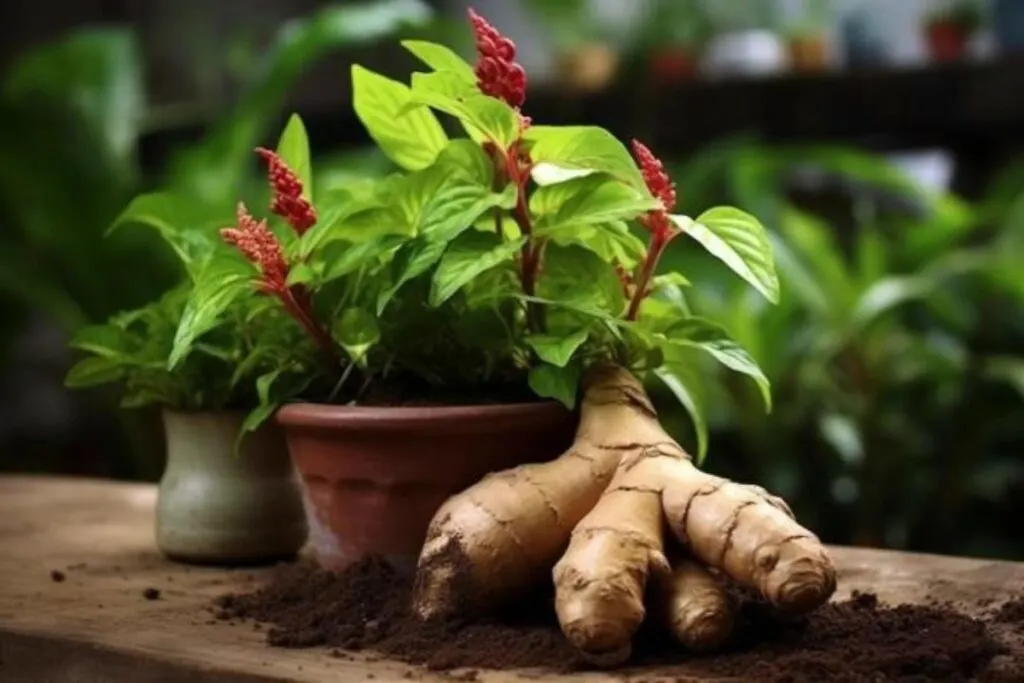
Growing ginger in pots is an excellent option for those with limited space or unsuitable outdoor growing conditions. Choose a wide, shallow pot, as ginger roots grow horizontally.
Ensure it has good drainage and use a rich, well-draining potting mix. Potted ginger plants still require the same care as those grown in the ground – regular watering, partial shade, and warm temperatures.
Overwintering
Overwintering ginger can be a crucial step depending on your climate. In regions where temperatures drop below 50°F (10°C), ginger needs protection.
If grown in pots, simply move them indoors to a warm, sunny spot. For ginger in the ground, mulching heavily can provide insulation.
Alternatively, you can dig up the rhizomes, store them in a cool, dry place, and replant them in the spring.
Transplanting
Transplanting ginger is generally done when you’re moving young plants from their initial pot to a larger one or to the garden.
Ensure the new location has rich, well-draining soil and partial shade. Be gentle with the roots to minimize stress and water the plant well after transplanting.
If you’re transplanting mature plants, do so with care as ginger rhizomes are delicate and can be easily damaged.
Common Pests & Diseases
Ginger is relatively resistant to pests and diseases, but it can encounter problems like root rot, fungal diseases, and occasional pests like aphids.
Good garden practices such as proper spacing, adequate air circulation, and avoiding over-watering can help prevent these issues.
If pests or diseases do appear, treat them early with organic or suitable chemical remedies.
Growing ginger is a journey of patience and care, offering a rewarding experience and a bounty of benefits.
As you nurture your ginger plants, you’ll not only gain fresh produce but also a deeper connection with nature and the rhythm of the seasons.
Whether you’re a seasoned gardener or a beginner, the world of ginger gardening is full of discoveries and delights.
Enjoy the process, and savor the unique flavor and health benefits of your homegrown ginger. Happy gardening!

